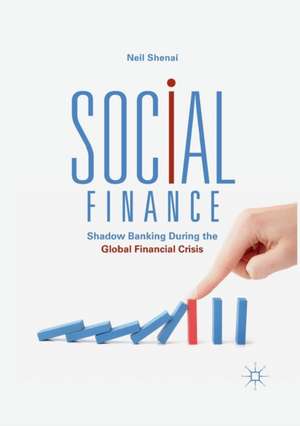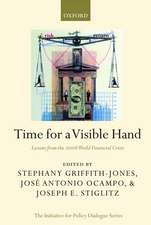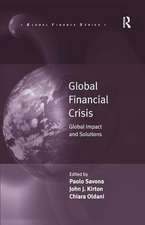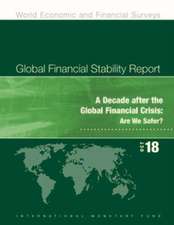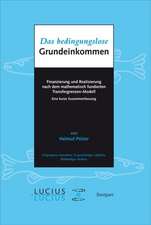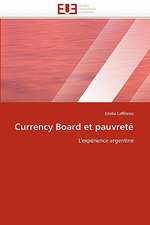Social Finance: Shadow Banking During the Global Financial Crisis
Autor Neil Shenaien Limba Engleză Paperback – 25 ian 2019
| Toate formatele și edițiile | Preț | Express |
|---|---|---|
| Paperback (1) | 212.06 lei 6-8 săpt. | |
| Springer International Publishing – 25 ian 2019 | 212.06 lei 6-8 săpt. | |
| Hardback (1) | 727.97 lei 6-8 săpt. | |
| Springer International Publishing – 2 oct 2018 | 727.97 lei 6-8 săpt. |
Preț: 212.06 lei
Nou
Puncte Express: 318
Preț estimativ în valută:
40.58€ • 41.92$ • 33.78£
40.58€ • 41.92$ • 33.78£
Carte tipărită la comandă
Livrare economică 26 martie-09 aprilie
Preluare comenzi: 021 569.72.76
Specificații
ISBN-13: 9783030082314
ISBN-10: 3030082318
Pagini: 231
Ilustrații: XVII, 231 p. 27 illus.
Dimensiuni: 148 x 210 mm
Greutate: 0.3 kg
Ediția:Softcover reprint of the original 1st ed. 2018
Editura: Springer International Publishing
Colecția Palgrave Macmillan
Locul publicării:Cham, Switzerland
ISBN-10: 3030082318
Pagini: 231
Ilustrații: XVII, 231 p. 27 illus.
Dimensiuni: 148 x 210 mm
Greutate: 0.3 kg
Ediția:Softcover reprint of the original 1st ed. 2018
Editura: Springer International Publishing
Colecția Palgrave Macmillan
Locul publicării:Cham, Switzerland
Cuprins
Chapter 1. McCulley’s Warning: Minsky, Economic Conventions, and Shadow Banking.- Chapter 2. Economic Conventions and Financial Crises: The Theory of Social Finance.- Chapter 3. Federal Reserve Monetary Policy, Economic Conventions, and the Housing Bubble.- Chapter 4. The Rise of Fragile Finance: Conventional Expectations, Bond Ratings, and Bank Capital.- Chapter 5. Regulators as Liquidity Providers of Last Resort.- Chapter 6. Markets After Lehman: Convention Uncertainty, Instability, and Intervention.- Chapter 7. Conclusions and Extensions of Conventions and Financial Stability.- Interview appendix.
Notă biografică
Neil Shenai was a Professorial Lecturer at American University’s School of International Service in Washington, DC from 2013-15. He received his PhD from Johns Hopkins University School of Advanced International Studies, where he served as an Adjunct Lecturer of International Economics from 2011-16. He is currently a Term Member of the Council on Foreign Relations.
Textul de pe ultima copertă
This book presents a new, inter-disciplinary framework of financial instability that builds on the Post-Keynesian model of financial crises in the tradition of Hyman Minsky and Charles Kindleberger. It reincorporates John Maynard Keynes’ insights on economic conventions to explain how market participants construct stable (but fragile) markets and why financial crises tend to take us by surprise. It borrows from scholarship on crises in international relations theory to examine how defied expectations can trigger panics in fragile financial systems. And it draws on perspectives from international political economy to show how elites’ foundational economic beliefs drive their responses to crises and how the effectiveness of their interventions depends on their credibility with the marketplace. The results of interviews with some of the world’s leading investors in Los Angeles, London, New York, and Toronto illustrate the utility of this new paradigm via a casestudy of shadow banking during the global financial crisis. A close examination of primary and secondary sources and quantitative evidence complement these first-hand accounts. All told, this book’s model offers a viable heuristic device for thinking about financial instability, which will be relevant to academics, policy makers, portfolio managers, and students.
Caracteristici
Advances a new theory of financial crises based on economic conventions Illustrates the utility of this conventions-based model via a case study of shadow banking during the global financial crisis Explains how shadow banks facilitate credit, liquidity, and maturity transformation outside of the traditional banking system Presents the results of interviews with securities dealers, hedge fund managers, private equity investors, and regulators who oversaw $2 trillion in notional order flows and managed over $160 billion in assets during the global financial crisis
